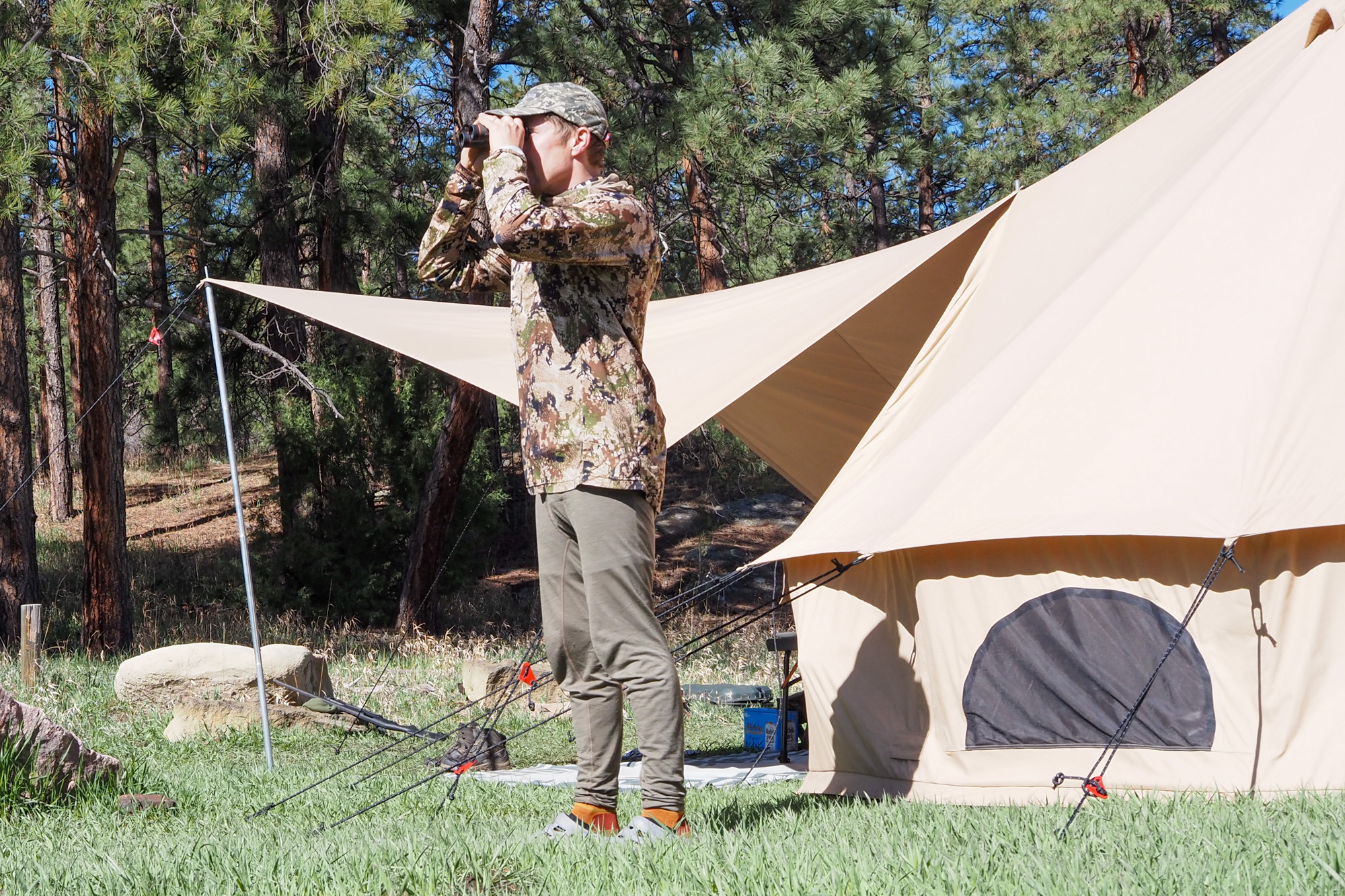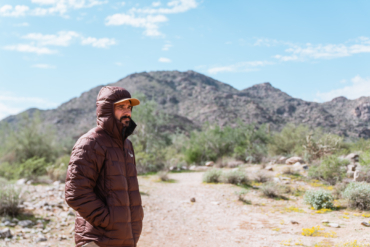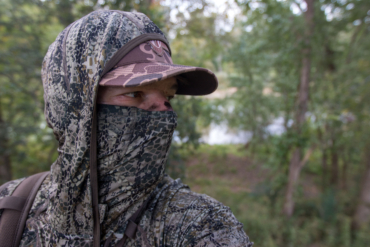Lots of stuff can go wrong in the outdoors. GearJunkie sat down with Sitka Gear’s John Barklow to talk personal safety and preparedness for hunting adventures.
I love traveling alone in the woods. This extends to everything from a short walk to a multiday excursion, from bird hunting to big-game hunting. But the reality of this type of travel is that it’s inherently riskier than traveling in a group.
I talked to John Barklow, Sitka Gear’s big-game product manager, to go deep on the topic and see where I can better my kit. And though Barklow holds a wealth of incredible information, he’s the last person to admit his prowess. So I’ll do it for him.
Not only is Barklow an expert in the world of clothing systems specifically developed for hunting, but he’s also a retired Navy diver with years of experience teaching Navy SEALS how to survive inclement conditions in Kodiak, Alaska.
His Instagram, website, and widespread media coverage make for a bevy of information that might just save your life. And he loves to educate folks on how to stay safer outside.
Barklow and I discussed the practice of risk mitigation, what systems to put in place, the gear everyone should carry, and how the acquisition of knowledge is the best possible survival tool in your kit.
The Art of Risk Mitigation

“If you don’t have the stuff for the worst-case scenario, you’re not mitigating all the risk,” Barklow said. “Going outside inherently has risk. What things are you putting in place to bring that risk down to an acceptable level?”
It’s a question all hunters should ask themselves. What is the worst-case scenario? And how does it differ across landscapes?
The worst-case scenario in the Arizona desert is a far cry from the worst-case scenario in the high altitudes of Colorado. And matching your kit to the elements is a consistent exercise in managing the “what ifs” of your upcoming hunts and adventures.
It’s not abnormal for folks to travel to hunt, and knowing the downsides of each climate and ecosystem is perhaps the greatest challenge.
“As a general rule, my clothing system is — outside of my mind — my first line of defense. Build this with the environment in mind,” he added. “Play to the averages.”
That is, what can go wrong will go wrong. And eventually, if put into enough scenarios with potential for less-than-ideal experiences, you’re likely to be the one to face the music.
So building a kit with risk mitigation in mind is the next step in protecting your safety.
Clothing System: Your First Line of Defense

When Barklow heads into the field, he knows and trusts that every piece of his kit is going to do that job. That’s especially true of his clothing system. He relies on synthetics for in-field safety, comfort, and time-tested performance.
“Synthetics are the pickup truck. They’re the thing you’re going to use 90-95% of the time,” Barklow said. “If you’re buying your first puffy, synthetic is going to work. It might be heavier or bulkier. But it’s mindless and it’s more affordable than down.”
Down, of course, is lauded as one of the warmest materials used in outdoor gear. But down has its downfalls. It’s great in very cold, dry climates. But in wet climates, even treated down will lose its loft and be rendered nearly useless when soaked.
“Down is the crossover SUV,” he added. “It’s kind of good at a couple of things. If I’m buying a second puffy jacket, I’ll buy down.”
Where synthetics truly shine is in wet climes. The tech of synthetics actually pulls moisture from the body, and in a symbiotic clothing system, each layer will pull moisture entirely out of the system.
And a clothing system is — very basically — made up of a base layer, a midlayer, and an outer layer.
Merino wool is another fiber that can work well in a dynamic clothing system, but Barklow stresses that you should test your gear, understand how it dries and how long it takes to dry, and then decide for yourself what works best for you.
Hunting Safety Gear for the Prepared Outdoorsperson
What you carry in your pack supplements the system you’ve chosen for your body.
“[A person’s kit] evolves over time,” Barklow said. “What I have now is not what I had 10 or 20 years ago. I started carrying a tourniquet in the past couple of years after a few field incidents made me double-think it.”
I have to say, I was happy to hear that the safety components of my hunt pack mirrored much of what a true expert had to say. Here’s what Barklow discussed as a safety pack list for the field. This list is not exhaustive, and it can change depending on the hunt:
- Satellite communicator: “Whether it’s a Garmin inReach, a Zoleo, or a Spot, this is super important.”
- Small ground pad: “It keeps you warmer while sitting. It can splint an arm, it can pad optics — it can do a lot of things.”
- Leukotape: “It trumps duct tape five times over.”
- Superglue
- Medical kit
- QuikClot: A must for anyone dealing with knives and firearms in the field
- Tourniquet: If you’re knowledge-equipped to use one!
- Emergency bivy
- Firestarter
- Water treatment
- Knife
- Snacks and lightweight meals
While we talked about safety gear, Barklow stressed that certain items — like a tourniquet — can actually do more harm than good if you’re not trained in how to properly use them. A wilderness EMT might add more gear to their backcountry kit, while an average day hunter might require less.
“There’s no need to bring products you don’t know how to use,” Barklow said. Point taken. And this brings me to the last point we discussed.
‘Knowledge Weighs Nothing’

No matter the gear a hunter brings, issues can come up for which knowledge is the only saving grace.
“Everybody sees all these experienced people doing this stuff, and they don’t understand the amount of time and experience that experts put into the systems they use on their hunts,” Barklow said. “If someone buys all the right outerwear and wears cotton clothes underneath, they could still get into serious trouble.”
Whether that’s understanding to go to a lower altitude if experiencing sickness above 9,000 feet or even knowing how to use your satellite communicator correctly before getting off the grid, a well-trained and prepared mind is your best bet against the odds.
“Knowledge weighs nothing,” he told me. “The more you know, the more adaptable you can be with what you bring.”
And, to be fair, knowledge acquisition does, in part, require in-field experience. But you can do a lot to figure out what works and what doesn’t before your hunt. Hike in the rain. Know your own pace. Set up your tent. Take a Wilderness First Aid course; some are even offered online these days.
Final Thoughts on Hunting Safely in the Field
When I know I’m prepared, my mental game is at its sharpest. I was happy that I’ve made good on a lot of the safety advice Barklow had, from carrying a GPS beacon to QuikClot to having emergency plans in place.
These buffers allow me to focus on the task at hand without worrying about what might happen or what I don’t have. And I’m pulling more than a few things from this conversation that will add to my sense of ability and resilience in the field.
I’ll leave it to Barklow’s final order to close out this piece:
“Be a student of the game. Don’t take people’s word for it. Do your own testing.”







